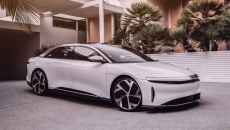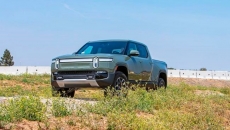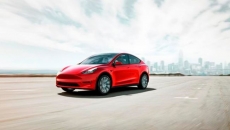In the past few years, Hyundai and Kia vehicles have skyrocketed to the top of Edmunds’ rankings in some of the most popular vehicle segments. For example, you’ll find a Hyundai or Kia in the top spots for three-row midsize SUVs, midsize sedans, and multiple categories of electric vehicles. This changing of the guard can come as a surprise for car shoppers expecting to see more familiar brands like Chevrolet, Ford, Honda and Toyota.
This success isn’t attributable to one single factor, such as short-lived marketing schemes like rock-bottom pricing or unsustainable rebates. Let’s take a closer look at what these sister South Korean automakers are doing well and where they’re still coming up short.
DISTINCTIVE DESIGN
First impressions matter, and this holds true when people are shopping for a new vehicle. Hyundai and Kia clearly recognize the importance of standing out in a crowd. Whether it’s a family-friendly SUV with three rows of seating or an electric SUV on the technological cutting edge, a bold exterior draws attention and holds interest.
We’ll start with EVs. While they share a platform and electric powertrains, the Hyundai Ioniq 5 and Kia EV6 take very different approaches to turning heads in the EV market. The Ioniq 5 is all edges and sharp angles, evoking Marty McFly’s time-traveling DeLorean from 1984’s “Back to the Future.” The Kia EV6, on the other hand, is more traditionally handsome with its pointed front end, chunky fenders and sleek tapered tail. More is on the way too. The recently introduced Hyundai Ioniq 6 electric sedan is wildly curvaceous and has a swooping roofline that extends nearly to the rear bumper.
This bravado extends to the realm of conventional SUVs. When it arrived for the 2020 model year, the three-row Kia Telluriderocketed up sales charts thanks partly to its broad-shouldered stance and rugged design. However, style isn’t everything. For example, the Kia Forte and Hyundai Elantra sedans also have distinctive looks but come up a little short on the fundamentals. That’s why the relatively conservative Honda Civic is still Edmunds’ top-rated small sedan.
THE LATEST TECHNOLOGY
Modern vehicles are now as much four-wheeled computers as they are traditional cars or trucks. As the recent microchip shortage proved, the technology beneath a car’s sheetmetal is extremely complex. But if the interface to this technology is so nuanced that it takes a degree from MIT to master, what’s the point?
Hyundai and Kia have met this challenge with infotainment systems that are simple to operate and come with sought-after features like Apple CarPlay and Android Auto, satellite radio and multiple USB ports. Many of the companies’ latest vehicles also feature sleek-looking displays for both the instrument cluster and infotainment touchscreen, making some rival systems appear rudimentary by comparison.
A focus on technology shows up in the automakers’ powertrain technology too. For example, the Ioniq 5 and EV6 have the capability to charge much more quickly at high-powered public DC fast-charging stations than many EVs. The South Korean companies have also been front-runners by offering hybrid and plug-in hybrid versions of their small SUVs, the Hyundai Tucson and Kia Sportage. However, shoppers should know that the regular non-hybrid versions of the Tucson and Sportage suffer from lackluster power and fuel economy and drop in Edmunds’ rankings as a result.
STANDARD FEATURES AND VALUE
Kia and Hyundai have upped the quotient of desirable technology and safety features across their vehicle lineups. Most importantly, they’ve done so without making car shoppers pay thousands extra. Many rival brands have routinely bundled tech and comfort touches into pricey option packages or limited availability to the priciest trims.
While the gap has narrowed, Hyundai and Kia cars and SUVs have a well-earned reputation for offering more features for a given price. The brands also provide exceptionally long warranty coverage, including a 10-year/100,000-mile limited powertrain warranty that no competitors match.
High consumer demand for certain Hyundais and Kias has put a damper on value, however. Particularly during the height of pandemic-related shortages, Kia Tellurides were known to carry dealer markups of thousands more than the manufacturer’s suggested retail price. It’s not as bad now, but Kia and Hyundai consumers still need to be wary of dealer markups that can easily erase a lot of baseline value.
EDMUNDS SAYS: Hyundai and Kia are on a roll with vehicles that have expressive designs, competitive prices and extensive standard features. These automakers have become the ones to beat in many car segments, but savvy shoppers will bear in mind that not every Hyundai and Kia is golden.






